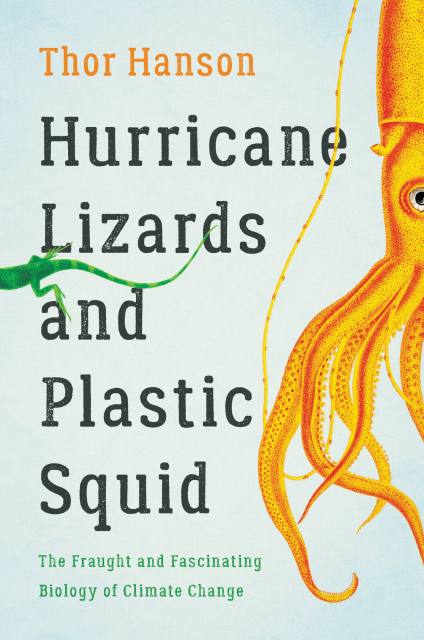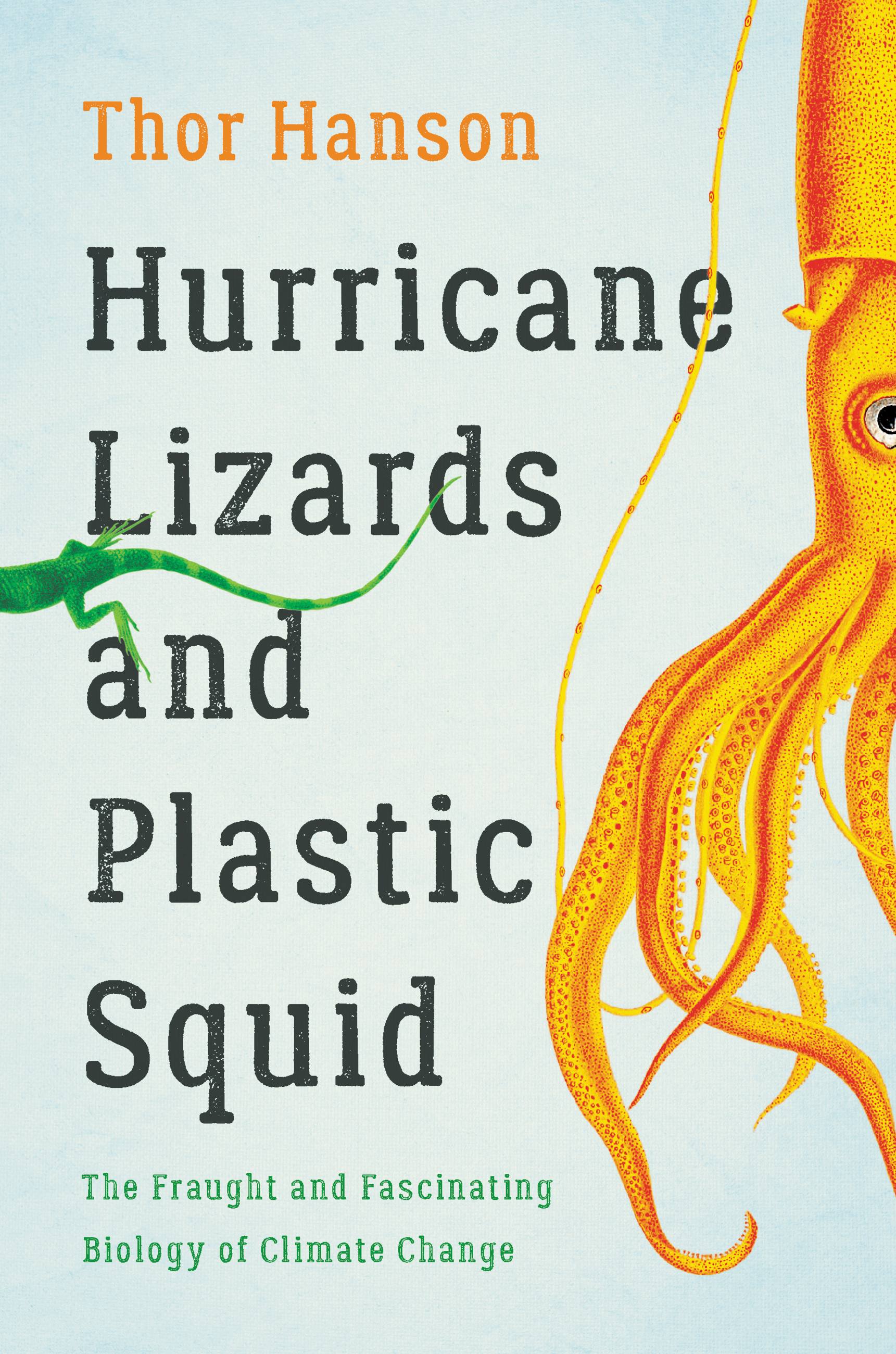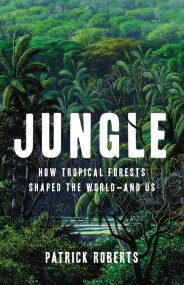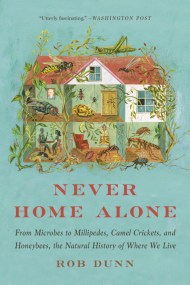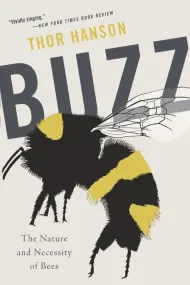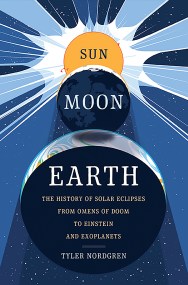Promotion
Use code MOM24 for 20% off site wide + free shipping over $45
Hurricane Lizards and Plastic Squid
The Fraught and Fascinating Biology of Climate Change
Contributors
By Thor Hanson
Formats and Prices
Price
$12.99Price
$16.99 CADFormat
Format:
- ebook $12.99 $16.99 CAD
- Hardcover $28.00 $35.00 CAD
- Audiobook Download (Unabridged) $24.99
- Trade Paperback $18.99 $23.99 CAD
This item is a preorder. Your payment method will be charged immediately, and the product is expected to ship on or around September 28, 2021. This date is subject to change due to shipping delays beyond our control.
Also available from:
*A New York Times Editor's Choice pick
*Shortlisted for the 2022 Pacific Northwest Book Awards
A beloved natural historian explores how climate change is driving evolution
In Hurricane Lizards and Plastic Squid, biologist Thor Hanson tells the remarkable story of how plants and animals are responding to climate change: adjusting, evolving, and sometimes dying out. Anole lizards have grown larger toe pads, to grip more tightly in frequent hurricanes. Warm waters cause the development of Humboldt squid to alter so dramatically that fishermen mistake them for different species. Brown pelicans move north, and long-spined sea urchins south, to find cooler homes. And when coral reefs sicken, they leave no territory worth fighting for, so aggressive butterfly fish transform instantly into pacifists.
A story of hope, resilience, and risk, Hurricane Lizards and Plastic Squid is natural history for readers of Bernd Heinrich, Robin Wall Kimmerer, and David Haskell. It is also a reminder of how unpredictable climate change is as it interacts with the messy lattice of life.
Genre:
-
“Hanson is an affable guide and storyteller, with a knack for analogy, a sense of humor and the natural curiosity of a scientist.”Jonathan Balcombe, The New York Times
-
“A masterful storyteller, Hanson interweaves his own formative experiences into the narrative…The book’s forward-looking approach seems intended to encourage readers’ curiosity about climate change, with the notion that, once suitably informed, they will feel compelled to take action.”Science
-
"Open[s] trapdoors onto the vivid lives of other beings in hopes of giving humans a close-grained understanding of our role in habitat change and the varieties of adaptation that may be in store for our species too.”The Atlantic
-
A Publishers Weekly Pick for Book of the WeekPublishers Weekly
-
“An engaging author who has celebrated the wonders of nature in books about feathers, seeds, forests and bees, he’s an ideal guide to a topic that might otherwise send readers down a well of despair.”Science News
-
“A wonderfully engaging tour of Earth’s plant and animal kingdoms.”Times Literary Supplement
-
"An outstanding introduction to a global threat."Portland Book Review
-
“With contagious curiosity, Hanson nimbly avoids pedantic, moralistic admonishments. Nature-lovers will be thrilled to see science so vividly described, and will marvel at the incredible ingenuity of creatures across the globe.”Publishers Weekly
-
“VERDICT: This compelling read will spark the interest of everyone who cares about what is happening to the natural world.”Rachel Owens, Library Journal
-
“Hanson writes a hopeful and compelling story exploring various climate adaptations in the animal and plant worlds with a rare combination of engrossing clarity and robust interrogation. He encourages us to lift our own voices and actually assert change. Each enormously engaging essay proves what I've known for some time: Thor Hanson is a marvel whose enthusiasm for this planet is utterly contagious.”Aimee Nezhukumatathil, New York Times bestselling author of World of Wonders
-
“One of our finest writers of literary natural history takes on the most crucial topic of our times—how will life itself respond to a warming world? —and brings back answers both utterly beguiling and strangely reassuring. This is arguably the most significant discussion of the biology of global warming I know, brought to us in the intelligent, wise, and beautiful prose we've come to rely upon Thor Hanson to deliver. If you read only one book on climate change this year, let it be this one.”Robert Michael Pyle, Ph.D., author of Wintergreen and Nature Matrix
-
“Thor Hanson’s clear-eyed science writing meets its best topic yet in this book. While governments and publics joust over climate change, biologists studying all the ways wild animals are already responding to it are five steps ahead of the game. Hanson takes his readers on a tour of this cutting edge in our rapidly-changing world. Yes, there are looming extinctions. But before you wring your hands in despair, read this book. As it always has, life finds a way.”Dan Flores, New York Times bestselling author of Coyote America
-
"Thor Hanson is not just a scientist and writer--he is a gifted raconteur, filled with wonder and love for the wild earth. In Hurricane Lizards and Plastic Squid Hanson brings his unique perspective to this time of ecological crisis. Rather than just a warming planet, we find stories from the infinite and varied tangle of life, with every being—from bacteria to birds—seeking to adapt with ingenuity and resilience. This book bears witness to the individual stories so often lost in climate headlines, and invites us all to live with greater depth and awareness as we seek a hopeful path forward."Lyanda Lynn Haupt, author of Rooted and Mozart's Starling
- On Sale
- Sep 28, 2021
- Page Count
- 304 pages
- Publisher
- Basic Books
- ISBN-13
- 9781541672413
